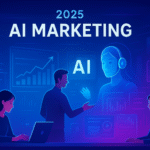Introduction
Artificial intelligence (AI) tools are rapidly transforming how businesses, creators, and consumers operate in 2025. From dynamic pricing and autonomous agents to predictive analytics and seamless integrations, the AI landscape is evolving at breakneck speed. Understanding the trends shaping the future of AI tools is essential for anyone looking to stay competitive, maximize ROI, and harness the full potential of these technologies.
This guide explores the most important trends to watch, drawing on the latest industry data, expert insights, and real-world examples. Whether you’re a business leader, developer, or everyday user, these trends will help you anticipate what’s next and make smarter decisions about your AI strategy.
The Rise of Usage-Based and Value-Based Pricing
AI tool pricing is becoming more granular and flexible. Instead of flat subscriptions, vendors are shifting to usage-based models—charging per API call, token, or task completed. This allows businesses to pay only for what they use, making AI adoption more accessible and scalable. Value-based pricing is also gaining ground, tying costs to the actual business impact or ROI delivered by the tool. For example, AI platforms for sales or healthcare may price their services based on performance improvements or cost savings achieved.
Key Takeaways:
- Predictable budgeting is harder, but entry costs are lower.
- Businesses must forecast true usage and align spend with value delivered.
- Expect more negotiation and custom contracts, especially for enterprise deployments.
Hybrid and Bundled AI Solutions
Vendors are increasingly offering hybrid pricing models and bundled features. This means users can start with free or basic tiers and seamlessly upgrade to paid plans as their needs grow. Bundled solutions combine multiple AI capabilities—such as chatbots, analytics, and automation—into a single platform, reducing complexity and supporting long-term adoption.
Key Takeaways:
- Flexible upgrades and layered entitlements are becoming standard.
- Bundles help prevent “shadow AI” risk and drive user adoption.
- Expect more microservices and modular AI features tailored to specific functions or industries.
Enterprise-Grade Security and Compliance for All
Security and compliance are no longer reserved for large enterprises. As AI tools handle more sensitive data, vendors are building in encryption, audit trails, and regulatory compliance (GDPR, SOC 2) across all pricing tiers. This shift is driven by customer demand and evolving regulations, making robust security a baseline expectation for any AI tool in 2025.
Key Takeaways:
- Security features are now standard, not premium add-ons.
- Compliance costs are rising, impacting total cost of ownership.
- Transparency in data handling and privacy policies is critical for buyer trust.
Agentic AI: Automation Beyond Simple Tasks
Agentic AI is changing the way businesses automate their work in 2025. Unlike older AI tools that only handle simple, repetitive tasks, agentic AI tools act like digital employees—they can plan, execute, and adapt complex, multi-step workflows with very little human help. For example, instead of just answering customer questions, an agentic AI can look at a customer’s purchase history, predict what they might need next, recommend solutions, and even coordinate with payment and shipping systems—all automatically.
These tools are not just following rules; they learn from past interactions, make decisions in real time, and adjust their actions based on new data. If something changes—like a delay in shipping or a new customer request—the AI can adapt instantly, keeping everything running smoothly. This means businesses can automate entire processes, such as supply chain management, document processing, or sales outreach, without needing to constantly check or update the system.
Pricing is also evolving. Instead of paying for software licenses or subscriptions, companies can now pay per agent, per workflow, or even per outcome—like paying only when a customer issue is resolved or a sale is completed. This makes advanced automation affordable and accessible, even for small businesses and individuals.
Key Takeaways:
- Advanced automation is now available to everyone, not just big companies.
- New pricing models (per agent, per workflow, per outcome) make it easier to pay for what you actually use.
- Agentic AI tools learn and adapt over time, getting better and more efficient as they go.
Continuous Improvement and Rapid Feature Updates
AI tools are improving faster than ever before. In 2025, companies release new features, integrations, and model upgrades every month—or even every week. This rapid pace is driven by strong competition between vendors, high customer demand, and the flexible design of modern AI systems.
For users, this means you can expect your AI tools to get smarter, faster, and more useful all the time. New updates might include better accuracy, new ways to connect with other software, or smarter ways to automate your work. However, it also means you need to stay informed—if you don’t keep up with updates, you might miss out on valuable improvements or fall behind competitors.
Early adopters—those who try new features as soon as they’re released—can benefit from cutting-edge capabilities, but they also need to be ready for frequent changes and sometimes unexpected bugs. Good vendor support and clear documentation are more important than ever, helping users understand new features and solve problems quickly.
Key Takeaways:
- Stay up-to-date with AI tool updates to get the most value.
- Early adopters get access to the latest features, but must be ready for change.
- Reliable vendor support and clear instructions are essential for success.
Open-Source and Customizable AI Frameworks
Open-source AI frameworks are closing the gap with proprietary solutions, offering businesses more flexibility and control. While open-source tools can reduce upfront costs, they often come with hidden expenses—such as integration, maintenance, and compliance overhead.
Key Takeaways:
- Open-source adoption is rising, especially for custom AI initiatives.
- Businesses must budget for ongoing support and infrastructure.
- Community-driven innovation accelerates feature development.

AI-Driven Pricing Optimization and Dynamic Markets
AI pricing optimization tools are transforming how businesses set prices, maximize revenue, and stay competitive. These tools analyze market trends, competitor prices, and customer behavior to automate and refine pricing strategies in real time.
Key Takeaways:
- Dynamic pricing is now table stakes for e-commerce, retail, and B2B.
- Predictive analytics and A/B testing drive profitability.
- Integration with CRM, ERP, and e-commerce platforms is critical.
Autonomous Agents and Predictive Analytics
Autonomous shopping agents, predictive analytics, and AI-powered decision-making are defining the next wave of retail and business innovation. These tools enable businesses to anticipate demand, personalize experiences, and automate complex tasks with minimal oversight.
Key Takeaways:
- Autonomous agents are reshaping customer journeys and supply chains.
- Predictive analytics improve forecasting and resource allocation.
- Expect more “hands-off” AI solutions that deliver measurable results.
Regulatory and Compliance Pressures: Explained Simply and Thoroughly
Regulatory changes are making AI adoption more expensive and complex. In 2025, new privacy laws like GDPR (Europe), CCPA (California), and the EU AI Act mean that any business using AI must follow strict rules about how data is collected, stored, and used. These rules require companies to invest in tools and processes that can:
- Track and document every change in regulations
- Prove how their AI systems make decisions (explainability)
- Monitor for risks and respond quickly to breaches or mistakes
Why does this matter?
- If a business doesn’t comply, it can face huge fines—sometimes millions of dollars.
- Compliance is now a must-have, not just a nice-to-have. Even small businesses need to show they’re following the rules.
- Vendors (the companies selling AI tools) are adding more compliance features, like audit trails, certified reports, and automated regulatory updates, to help buyers meet these requirements.
- All these extra features and legal reviews increase the total cost of owning and using AI tools. Pricing is often less transparent, with custom quotes and add-ons for compliance, making budgeting harder.
- Companies must stay ahead of regulatory changes to avoid penalties and keep customer trust. This means regularly updating their systems and training staff on new rules.
In summary:
- Compliance is essential for every business using AI.
- Costs are rising because of new laws and the need for specialized tools and expertise.
- Vendors are investing in compliance features, but buyers must plan for these costs and stay informed about changing regulations.
The Impact of Market Competition and Global Economics: Explained Simply and Thoroughly
Intense competition among AI vendors is changing how tools are priced and what features are offered. In 2025, there are more AI companies than ever, each trying to win customers by offering:
- Promotional pricing (discounts, free trials, bundled packages)
- New features and service levels to stand out
- Flexible plans to attract different types of users
How do global economics affect AI adoption?
- Factors like inflation, interest rates, and global investment in technology directly impact how much companies are willing to spend on AI tools.
- When the economy is tight, businesses become more cautious. They may delay buying new AI tools or stick with free versions unless the return on investment (ROI) is clear and proven.
- Vendors respond by lowering prices, offering more flexible payment options, and bundling services to make their tools more attractive.
- However, as competition pushes prices down, the complexity of choosing the right tool goes up. There are more options, more features, and more pricing models to compare.
- Economic pressures also drive innovation—vendors must keep improving their tools to stay ahead, but they may also cut back on support or development if budgets shrink.
In summary:
- Expect more deals, free trials, and bundled offers as vendors compete for customers.
- Prices may drop, but buyers must spend more time comparing options and understanding what’s included.
- Economic conditions influence both vendor innovation and how quickly businesses adopt new AI tools.
Bottom line:
- Regulatory compliance is now a core part of AI tool costs and planning. Businesses must invest in staying compliant to avoid penalties and build trust.
- Market competition and global economics mean more choices and better deals, but also more complexity. Careful evaluation and clear ROI are key to making smart AI investments in 2025.
How to Prepare for the Future of AI Tools: A Practical Guide
Preparing for the future of AI tools means more than just adopting the latest technology—it requires a strategic, ethical, and people-focused approach. Here’s how you can set your organization up for long-term success:
Forecast Usage and Align Spend with Value Delivered
Before investing in AI, estimate how you’ll use these tools and what business outcomes you expect. Start with a pilot project in a high-impact area to test feasibility and value. Track key performance indicators (KPIs) like time saved, cost reduction, or customer satisfaction. Use these insights to scale up only where AI delivers measurable results, ensuring your spending matches the value you receive.
Prioritize Security, Compliance, and Transparency
As AI tools handle more sensitive data, robust security and compliance are essential. Choose solutions that offer encryption, access controls, and clear privacy policies. Stay up-to-date with regulations like GDPR or industry-specific standards. Build transparency into your AI practices by documenting how models make decisions and regularly reviewing for bias or errors. Ethical and responsible AI use is now a business imperative, not just a technical concern.
Stay Informed About Updates, New Features, and Regulatory Changes
AI tools evolve rapidly, with new features and integrations released frequently. Subscribe to vendor updates, join user communities, and monitor industry news to keep your team informed. Regulatory frameworks are also changing—make sure your organization adapts to new compliance requirements and best practices. Continuous learning and adaptation will help you maximize the benefits of AI and avoid costly missteps.
Experiment with Hybrid and Bundled Solutions to Maximize Flexibility
Don’t lock yourself into a single tool or vendor. Many organizations succeed by combining free and paid AI tools, or by using bundled platforms that offer multiple capabilities. This hybrid approach lets you start small, test different solutions, and scale up as your needs grow. Flexible adoption strategies help you avoid overbuying and ensure you’re always using the best tool for each task.
Invest in Training and Change Management to Drive User Adoption
AI is most effective when your team understands how to use it and feels confident integrating it into daily work. Provide role-specific training, clear usage guidelines, and ongoing support. Involve employees in pilot projects and gather their feedback to refine your approach. Change management is key—address concerns, communicate benefits, and celebrate early wins to build buy-in and momentum.
Summary:
- Start with clear business objectives and pilot projects to validate AI’s value.
- Make security, compliance, and transparency a top priority.
- Stay agile by keeping up with new features and regulations.
- Use a mix of free, paid, and bundled AI tools for flexibility.
- Empower your team with training and thoughtful change management.
By following these steps, you’ll be ready to harness the full potential of AI tools—driving innovation, efficiency, and sustainable growth in the years ahead.
Conclusion
The future of AI tools is dynamic, flexible, and increasingly value-driven. As pricing models evolve, features expand, and competition intensifies, businesses and users must stay agile—adapting to new opportunities and challenges. By understanding these trends and preparing strategically, you can harness the full power of AI tools to drive growth, efficiency, and innovation in 2025 and beyond.




